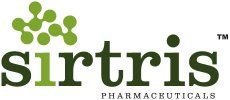Request Demo
Last update 08 May 2025
SIRT1 x MMP9
Last update 08 May 2025
Related
1
Drugs associated with SIRT1 x MMP9Target |
Mechanism MMP9 gene inhibitors [+1] |
Active Org.- |
Originator Org. |
Active Indication- |
Inactive Indication |
Drug Highest PhasePending |
First Approval Ctry. / Loc.- |
First Approval Date20 Jan 1800 |
100 Clinical Results associated with SIRT1 x MMP9
Login to view more data
100 Translational Medicine associated with SIRT1 x MMP9
Login to view more data
0 Patents (Medical) associated with SIRT1 x MMP9
Login to view more data
148
Literatures (Medical) associated with SIRT1 x MMP901 Aug 2025·Journal of Pharmaceutical and Biomedical Analysis
Yi-qi-yang-yin decoction ameliorates diabetic retinopathy: New and comprehensive evidence from network pharmacology, machine learning, molecular docking and molecular biology experiment
Article
Author: Kong, De-Xing ; Shen, Qing ; Huang, De-Lian ; Tong, Yu-Hua ; Zeng, Xi-Xi ; Gao, Yuan ; Liu, Shi-Yu ; Li, Ping ; Wang, Si-Wei ; Hu, Yan-Jun ; Lan, Tian ; Mao, Zhu-Jun
01 Apr 2025·Stem Cell Reviews and Reports
Stem Cell Therapy Modulates Molecular Cues of Vasogenic Edema Following Ischemic Stroke: Role of Sirtuin-1 in Regulating Aquaporin-4 Expression
Article
Author: Yavagal, Dileep R ; Borah, Anupom ; Saraf, Shailendra ; Datta, Aishika ; Bhattacharya, Pallab ; Ghosh, Bijoyani ; Karmarkar, Gautam ; Barik, Anirban ; Sarmah, Deepaneeta
01 Apr 2025·Journal of Molecular Histology
The Sirt1/FOXO signal pathway involves in regulating osteomyelitis progression via modulating mitochondrial dysfunctions and osteogenic differentiation
Article
Author: Ren, Lirong ; Tong, Huan ; Li, Shaobo ; Liu, Feifei ; Zhang, Runyao ; Kou, Nannan
Analysis
Perform a panoramic analysis of this field.
login
or

AI Agents Built for Biopharma Breakthroughs
Accelerate discovery. Empower decisions. Transform outcomes.
Get started for free today!
Accelerate Strategic R&D decision making with Synapse, PatSnap’s AI-powered Connected Innovation Intelligence Platform Built for Life Sciences Professionals.
Start your data trial now!
Synapse data is also accessible to external entities via APIs or data packages. Empower better decisions with the latest in pharmaceutical intelligence.
Bio
Bio Sequences Search & Analysis
Sign up for free
Chemical
Chemical Structures Search & Analysis
Sign up for free
